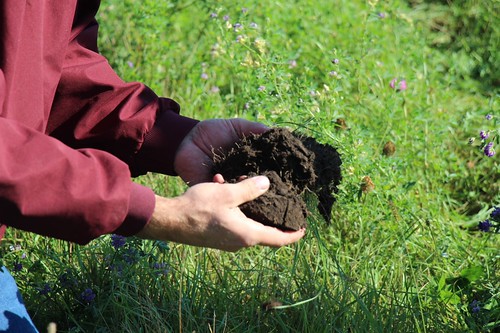
When you stop on a bridge that crosses the Big Sioux River in Hamlin County, South Dakota, and look south you can see how well Donnie, Barry and Eli Little manage their cows and crops to improve soil and water quality and increase productivity.
Cows graze in one of 24 paddocks that the family manages with a computer program Eli made after graduating from South Dakota State University in 2013. An electric fence along a buffer strip following the river keeps cows out, protecting the source of drinking water for the city of Sioux Falls.
“In 2014, there were ears on every stalk on that field for the first time in years,” says Barry, which he attributes to improved soil and variable rate seed and fertilizer.
The Littles’ farming operation combines brothers Donnie and Barry’s decades of experience with crops and cattle with the talent of Barry’s son Eli’s precision agricultural expertise.
In the early 1990s, the brothers began no-tilling their corn, soybeans and hard red spring wheat. Recently, the Littles have done some strip-tilling of corn.
“With no-till, our soils are like a sponge. There used to be some gullies, but not anymore. A three-inch rain will soak into our no-tilled fields,” said Donnie. “Our fuel and machinery costs are less with no-till. We don’t need a digger or a disk. No-till saves a lot of time.”
“I believe my yields are better with no-till than with tillage,” Donnie said. “We have a moisture deficit, and one to two inches of moisture gained with no-till makes a heck of a difference.
“The Littles are doing a lot of things to make their farm and ranch more productive,” says Jim Dylla, District Conservationist with the USDA’s Natural Resources Conservation Service (NRCS).
For the Littles, multi-species long-season cover crops provide forage for their cow-calf pairs. “We’ve turned most of our hay ground into pasture,” Barry said. “We are working on extending the grazing season as long as we can.”
“Seeding the full-season cover crops is part of our decision to provide more feed for our increased number of cows,” Barry Little says.
“The cows and calves did well on the full-season cover crops in October,” Barry said. “After the calves were weaned in October, they adjusted well in the feedlot.”
In early September, cows had grazed and been moved to another paddock, but some sunflowers, big purple top turnips and radishes still stood as the Littles and Dylla evaluated the post-grazing condition of the soil.
“Getting cover crops planted will do wonders for soil health and soil biology,” Dylla says.
Cover crops do more than provide forage for cows. They also help farmers manage excessive moisture. “We had a lot of rain last fall,” Dylla says. “Any fall moisture is really going to be excessive, so you have to make use of it with cover crops. Instead of the nutrients leaching out of crop ground, the cover crops bring them back up to the surface where they are available for next year’s crop.”
To learn more about NRCS conservation programs and soil health, visit your local USDA Service Center or http://www.nrcs.usda.gov/GetStarted.

